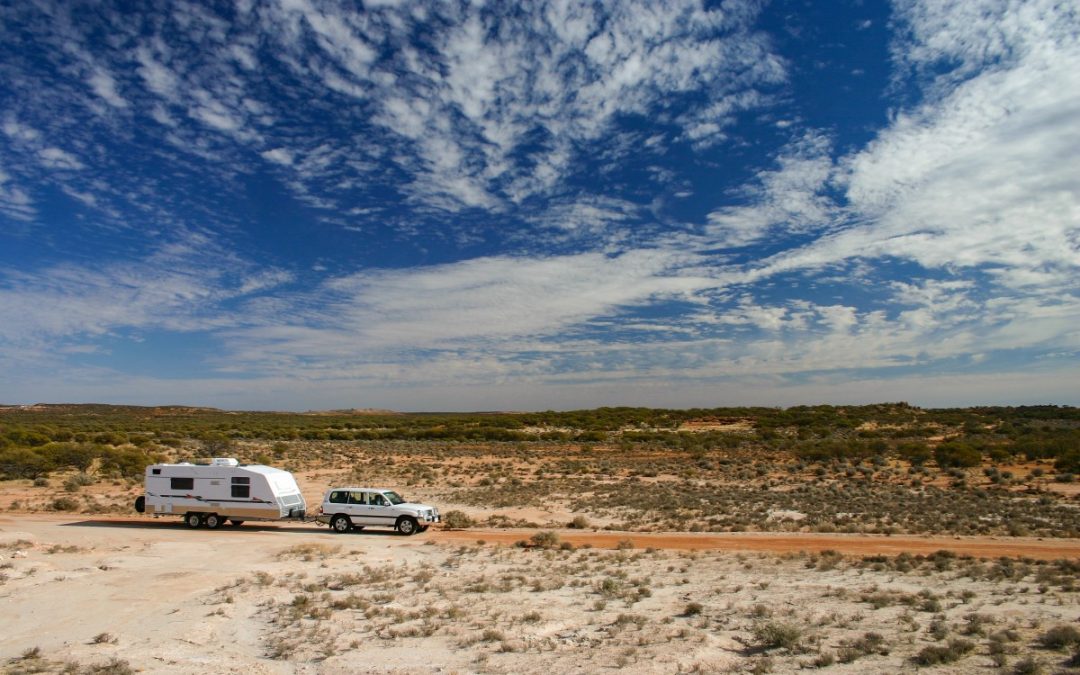Caravan travel in Australia has rocketed in popularity. Calling themselves Grey Nomads, adventurous retirees from all over the world are setting a rather fun example by caravanning around the Australian heartland. Jan and her husband Peter joined them. Here is their story.
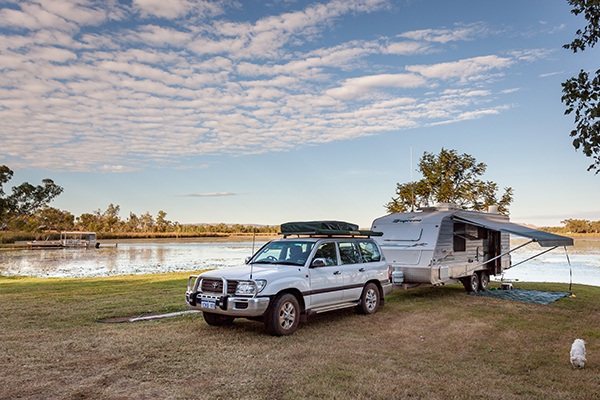
Taking a caravan with you means you don’t have to find a hotel!
When I retired after decades working in education, I wanted to do something significant to celebrate this transition in my life. My husband, Peter, who was retiring at the same time, was of the same persuasion. After much consideration, we decided to spend a year travelling by caravan around Australia. Our home country is a vast, incredibly diverse country with lots to see.
Advantages
There are many advantages to touring Australia this way. The most important being that in the pristine wilderness areas, there is no accommodation. With a caravan, we had the freedom to plant ourselves wherever we wanted. We left the Gold Coast in no rush: Because we had retired, we had unlimited time to explore. And in Australia you need unlimited time, considering the huge distances that need to be crossed.
There was no boss to contend with, no timetables, and my husband and I were together all the time. It was great for our relationship, seeing as we were living in close quarters … although some relationships wouldn’t survive this kind of 24/7 exposure!
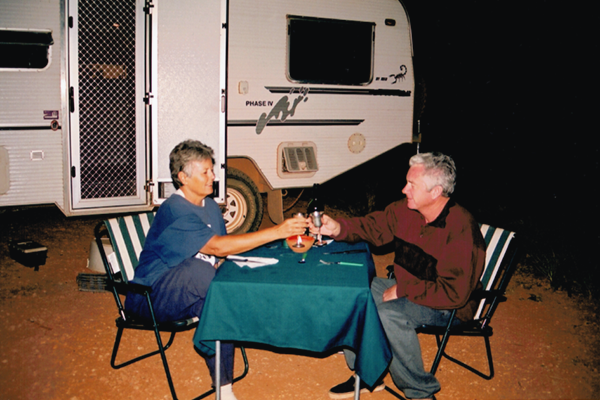
Jan and Peter in the best seat in the house!
The travelling life took some getting used to. It took me a couple of months not to leap out of bed and say, “What are we doing today?” Once I had seen enough beautiful bays and stunning gorges I wanted to move on. Peter was prepared to stop and relax. The compromise? I slowed down and Peter sped up.
Grey Nomads
We found travelling in our little caravan very safe. And we weren’t alone. The tracks were very much populated by other Grey Nomads from all over the world. The choice of accommodation ranged from tiny tents to massive luxury recreational vehicles with every mod con. They were all armed with silver hair. And, of course, they made great travelling companions and sunset drinking partners! British, Irish, Swiss and especially Germans. Most were travelling in hired, well-equipped motor homes; they tended to cluster together in picnic grounds or roadside parks for a feeling of security.
A Lifestyle
There were many Australians who liked the lifestyle so much that they made their vans their permanent homes. They travelled like migratory birds and seeking out the warmer weather. Friendships were made along the way as people gathered in flocks at sunset to enjoy a drink together. We enjoyed many delightful evenings socialising with such like-minded travellers.
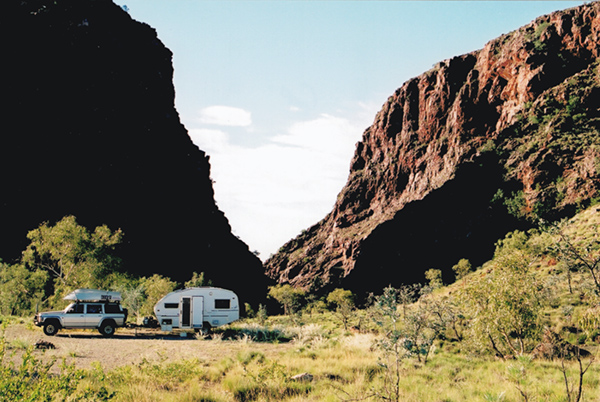
Coppin Gap near Marble Bar
All this travelling bliss didn’t come without lots of preparation and hard work. Peter and I had planned to quit work and start travelling at age 50, but our goal wasn’t reached until we were both 55. During that five-year period, we attended camping and caravan expos. We studied travel brochures and pored over maps. Our love of the wilderness caused us to shop for a sturdy, compact and manoeuvrable off-road van.
The Caravan
An Australian company was willing to build a van to our specifications. They put us on a six-month waiting list before the commencement of its construction. On top of the basic cost, further investment was made. It went on extras that included six rooftop solar panels, three deep-cycle batteries and specially-adapted 12-volt electrical appliances. This included a fridge/freezer, television (which only worked close to towns), radio, ceiling fans, cooking range hood, and pressure pumps on taps. A gas stove and oven were powered by two nine-kilo gas bottles. Under the floor we fitted three water tanks to hold 220 litres (this is Australia, remember — a land of vast, beautiful deserts). These could be filled with bore water, river water or even dam water for showers and washing dishes and clothes.
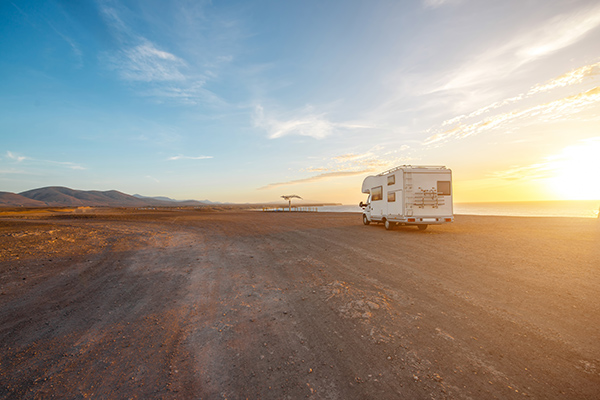
Caravan travel has rocketed in popularity.
Water
A 60-litre tank was separated to provide good-quality drinking water. We installed a tap and a power point on the towbar to operate a twelve-volt camping shower. Overall it worked well. A porta-loo was installed in the caravan, so we had all the luxuries of home. Filling our water tanks was the main problem when travelling in outback Western Australia, Northern Territory and especially South Australia. For this reason, we overnighted in a caravan park approximately once a fortnight. Here, we topped up water, bought diesel (we carried extra jerry cans of fuel), washed our clothes and shopped for fresh groceries. Another source for water was petrol stations. We asked the attendants if we could fill our water tanks before buying the fuel. Some council parks and information centres had available taps, too.
Water was very much the topic of conversation with other passing Grey Nomads. Their opening lines invariably included the questions: Where did you get water? There were other questions. Where was the cheapest diesel? And where are the best camping spots? In major cities, especially if there was a large supermarket, we stocked up on tinned and packaged goods. We carried long-life milk and baked our own bread. Caravanners have to be careful with shopping. Anything purchased away from large towns was extremely expensive. And the extra weight we were loading into the storage locker was always a concern. The packaging had to be kept until a suitable rubbish bin was found.
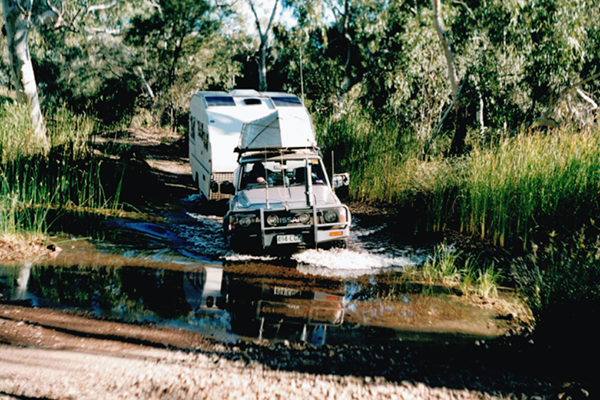
Traversing a river in the Kimberleys
Food
Mostly, our food wasn’t too different from our meals at home. Seafood was the exception. We caught salmon in Coffin Bay National Park and velvet-backed crabs at Tractor Beach near Streaky Day in South Australia. Happily we feasted on sand crabs scooped up in nets near Mandurah. And we collected oysters in a squatter’s village at Quobba Beach. We ate mangrove jack fish that we speared in the sea at Barn Hill Station neat Broome, Western Australia. The wine tasting in the superb vineyards of Margaret River south of Perth, was a treat.
We joined the Australian Radio Network and purchased a second-hand HF radio (which we sold on our return). We logged in our location during our scheduled time each evening and our progress was mapped. An emergency messaging facility was offered by this organisation. We could also listen to other members of the radio network. This was interesting and we often joined the conversation to gain knowledge of an area ahead of us. A UHF radio was installed for closer communications and we had many pleasurable conversations with other Grey Nomads crossing our path.
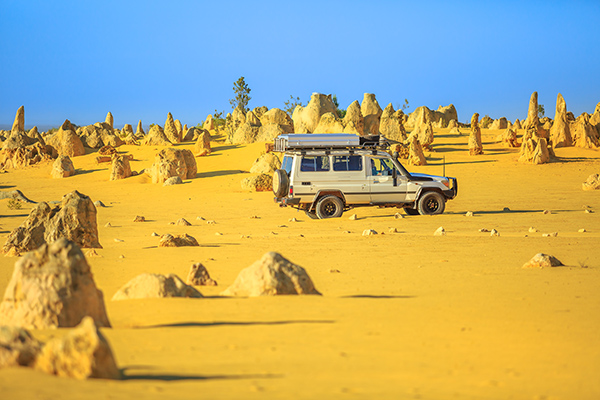
You can ditch the caravan and drive through places like The Pinnacles
Western Australia
Our initial journey took us straight across to the cooler South Australian coast in the summer heat of December. It took us nine months to explore Western Australia – the largest state with the most remote areas. It is not advisable to pass north of the Tropic of Capricorn in Western Australia before May. The national parks are closed until after the wet season and the heat is oppressive.
An annual National Parks Pass is an economical way of visiting the numerous attractions. During June and July, the caravanning Grey Nomads stream towards the warmer north. We stayed two-thirds of our nights in free wilderness areas. The rest of our time was spent in national parks, on council reserves and at caravan parks. The cost did not necessarily represent the quality of the facilities provided.
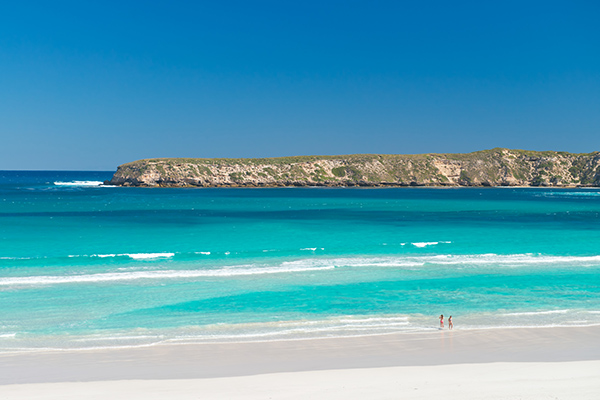
Arriving at Coffin Bay was a great break from the dry deserts of the interior.
Nullabor
A memorable night was spent during our crossing of the Nullarbor Plain along the bottom of Australia. We drove ten kilometres from the highway along a rough track to the mouth of Cocklebiddy Cave. After exploring (with strong torches) a massive underground cavern and river, we emerged just at dusk to eat our dinner under a starry sky that touched the horizon in every direction on the treeless plain. There was no sign of other human life.
Two weeks were spent camped on the remote Ningaloo Station with its kilometres of beachfront. For a small fee we were free to choose any spot we liked. We snorkelled over the coral and saw abundant sea creatures. The tourist resort of Monkey Mia was a welcome oasis after a couple of weeks in the dry, red interior. We encountered dugongs, turtles, large rays and lots of dolphins. Karijini National Park was the highlight of our year. The deep gorges, red cliffs and white gum trees were stunning. We pushed ourselves to our limit climbing up and down ladders and ropes, and swam through gorges that narrowed to a metre in width. The waterfalls and pools were in extreme contrast to the surrounding arid countryside.
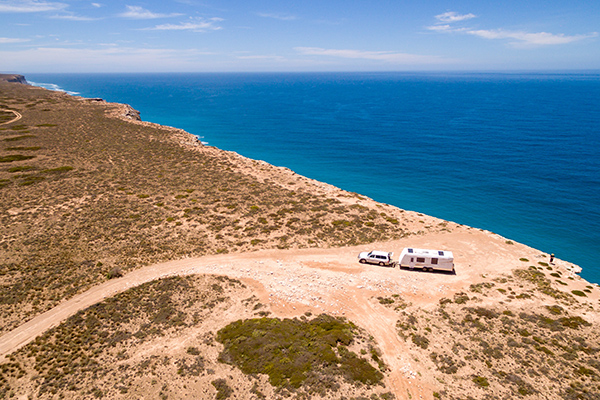
Most conversation between passing caravanners starts with Where did you get water
The Kimberleys
We spent a month travelling the remote and rough Gibb River Road, delighting in all the interesting diversions. The whole of the Kimberley area was spectacular. The gorges and waterfalls were a delight to behold. To explore the Mitchell Plateau, Kalumburu in the extreme North West, and the Bungle Bungles, we parked our caravan and ravelled the narrow rough roads in the 4WD with just our little tent. The Tanami Track led us into Alice Springs from the West.
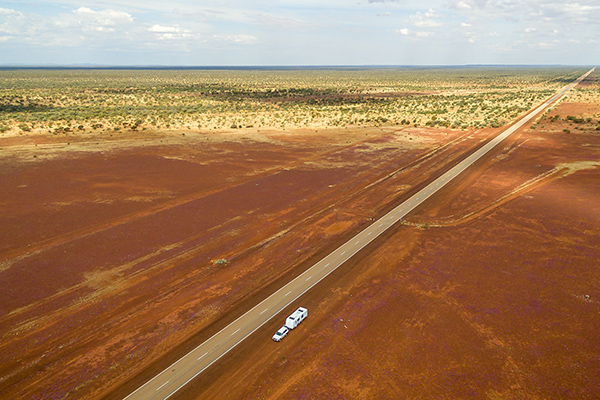
Anywhere is a good lunch spot alongside a straight highway in the outback of Australia
The Return
Our trip back into Queensland was across the middle of Australia. The highlights were Uluru, the Olgas and Kings Canyon, then down the Oodnadatta Track, following the history of the old telegraph line. We marvelled at the salt of Lake Eyre and the opals in the underground mining town of Coober Pedy. After a year on the road, I was looking forward to living in a house once again and to catching up with our family. My husband would have happily continued on!

Ningaloo Reef, where you can swim in the pristine waters alongside the gentle whale shark
So why take a caravan across Australia? It’s a fabulously diverse country, and caravanning is an economical way to travel. In all, we drove approximately 30,000km. It was a life-changing experience, and our relationship flourished. In future years, we hope to explore different tracks we have not yet travelled.
If caravanning isn’t your thing, perhaps sailing is. Check this out.

Editor for Silver Magazine Gold Coast
